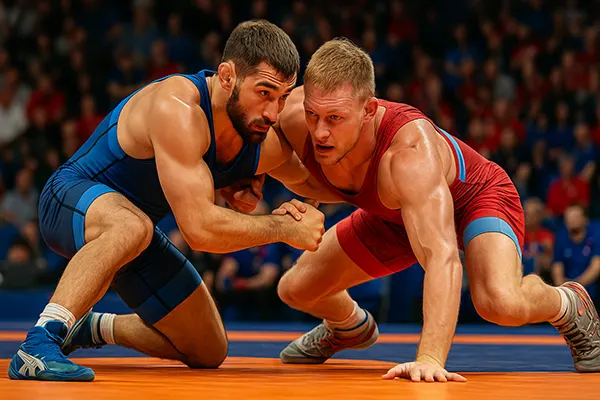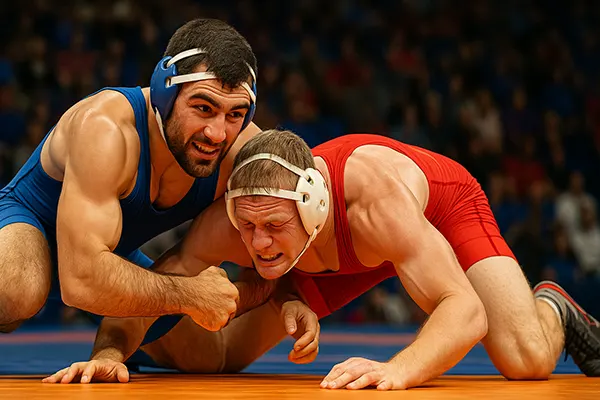
Poland Open Wrestling Tournament 2025: Key Bouts and Future Implications
The Poland Open 2025 has once again cemented its status as one of the most significant international wrestling tournaments in Europe. Gathering elite athletes from across the globe, this year’s edition showcased high-level performances in both freestyle and Greco-Roman disciplines. With Olympic qualifiers on the horizon, the tournament provided critical insights into the form and strategies of leading contenders.
Freestyle Wrestling Highlights
Freestyle wrestling at the Poland Open 2025 drew athletes from over 40 countries, including world champions and rising stars. One of the standout performances came from the United States team, whose wrestlers secured several gold medals across different weight categories. Their technical precision and aggressive style highlighted their preparation for the upcoming World Championships.
The European contingent, particularly athletes from Georgia and Azerbaijan, also made a strong impression. Both nations are traditionally dominant in freestyle wrestling, and their athletes demonstrated exceptional strength and tactical adaptability. Several close bouts were decided in the final seconds, emphasising the competitive nature of this year’s tournament.
Young talents from Eastern Europe, including Poland’s own wrestlers, showed remarkable progress. Although they did not secure many podium finishes, their performances suggested that the host nation is developing a new generation of competitive athletes who may become serious contenders in the near future.
Key Freestyle Bouts to Watch
One of the most anticipated matches was between Kyle Snyder (USA) and Givi Matcharashvili (GEO) in the 97 kg category. The bout lived up to expectations, featuring dynamic takedowns and strong defensive counters. Snyder’s experience ultimately gave him the edge, but Matcharashvili’s performance confirmed his place among the world’s elite.
In the lighter categories, 65 kg saw an intense battle between Poland’s Krzysztof Bienkowski and Azerbaijan’s Haji Aliyev. Despite a strong start from Bienkowski, Aliyev turned the tide with his signature counterattacks, winning the match with a narrow points margin. The bout drew loud support from the home crowd and showcased Bienkowski’s potential on the international stage.
Another highlight came from the women’s 62 kg division, where USA’s Kayla Miracle defeated Norway’s Grace Bullen in a dramatic match. The clash displayed high technical skill, with Miracle’s superior conditioning proving decisive in the final minutes.
Greco-Roman Wrestling Highlights
Greco-Roman wrestling at the Poland Open 2025 was equally compelling, featuring seasoned veterans and emerging talents. The competition level was particularly high in the heavier weight classes, where powerful throws and clinch techniques dominated the action. Wrestlers from Hungary and Armenia stood out, continuing their countries’ long-standing traditions in this style.
Poland’s representatives made noticeable progress, showing improved upper-body control and tactical awareness. While they did not claim top medals, several reached the later stages of their brackets, a promising sign ahead of European competitions. Their disciplined performances earned respect from coaches and spectators alike.
Scandinavian wrestlers also had a strong presence, especially in the middleweight divisions. Sweden’s athletes demonstrated excellent endurance and counter-wrestling, securing multiple podium finishes and signalling their intent to challenge traditional powerhouses later this year.
Key Greco-Roman Bouts to Watch
The standout bout came in the 87 kg division between Armenia’s Artur Aleksanyan and Hungary’s Erik Szilvassy. Both Olympic medallists, they delivered an intense tactical match decided by a late point from Aleksanyan, confirming his world-class form ahead of Paris 2025 qualifiers.
In the 60 kg category, Poland’s Mateusz Bernatek faced Kazakhstan’s Meirzhan Shermakhanbet in a fast-paced match full of lifts and throws. Although Bernatek lost narrowly, his fearless approach and stamina earned admiration from the audience.
Another memorable clash took place in the 77 kg division between Sweden’s Alex Kessidis and Turkey’s Yunus Basar. Kessidis executed a textbook reverse lift to seal victory, highlighting the technical depth present at this year’s tournament.

Implications for Future Competitions
The Poland Open 2025 has significant implications for the upcoming World Championships and Olympic qualifiers. The tournament served as a benchmark for assessing athletes’ readiness, exposing strengths and areas needing improvement. For many national teams, it provided essential data to finalise line-ups for the Paris 2025 Olympic qualifying events.
For Poland, the tournament reinforced the growth of its wrestling programme. The younger generation’s performance demonstrated that the country is steadily building a competitive presence on the international stage. Continued investment in coaching and training infrastructure is likely to yield stronger results in the next two years.
Overall, the Poland Open 2025 highlighted the depth and global reach of wrestling talent. It reaffirmed the event’s role as a key preparatory competition, where future champions are tested and rivalries are forged, shaping the narrative of the sport ahead of the Olympic year.
How the Results Shape Paris 2025
The results from Poland Open 2025 will influence seeding positions and strategic planning for national teams. Athletes who performed strongly are now front-runners for Olympic qualification spots, and their performances will shape tactical decisions at upcoming continental championships.
Coaches will analyse these bouts to refine match strategies, particularly against rivals they are likely to meet again on the road to Paris. This analytical approach is vital in a sport where minor tactical adjustments can determine victory.
Ultimately, the Poland Open provided not only medals but also critical insights. As the wrestling world turns its attention to the Olympic qualifiers, the lessons learned in Poland will resonate throughout the year, impacting team selections and athlete preparation plans.
